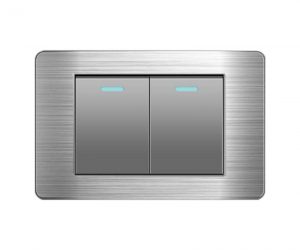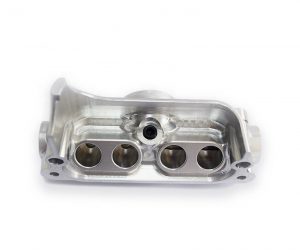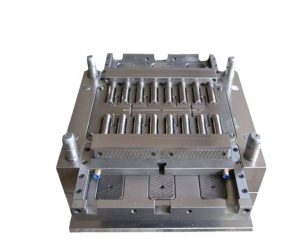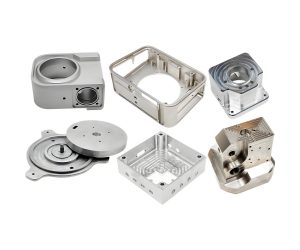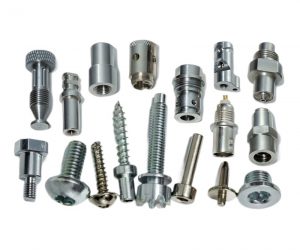The seemingly simple parameter of mold temperature exerts a profound and multifaceted influence on the injection molding process, impacting not only cycle times and production efficiency but also the very microstructure and resultant properties of the finished part. A nuanced understanding of these thermal effects is paramount for achieving consistent, high-quality output.
Beyond the readily apparent impact on fill time and flowability—where elevated mold temperatures reduce melt viscosity, accelerating cavity filling and promoting uniformity—the thermal regime profoundly shapes the part's morphology and final properties. The cooling rate, directly dictated by mold temperature, governs the degree of crystallinity in semi-crystalline polymers like polypropylene (PP) and polyethylene terephthalate (PET). Faster cooling, often associated with lower mold temperatures, can lead to increased crystallinity, resulting in enhanced stiffness and tensile strength but potentially at the cost of increased brittleness. Conversely, slower cooling at higher mold temperatures may yield improved impact resistance but potentially reduced dimensional stability.
The relationship between mold temperature and dimensional stability is particularly critical. Non-uniform temperature distributions within the mold cavity induce differential shrinkage, leading to warpage, sink marks, and deviations from specified tolerances. This necessitates precise temperature control, often achieved through sophisticated multi-zone temperature regulation systems. Moreover, the thermal history of the polymer during the molding cycle influences residual stresses within the part, potentially leading to long-term dimensional instability or even catastrophic failure under stress.
Material selection itself is intimately linked to optimal mold temperature ranges. Amorphous polymers like polystyrene (PS) exhibit different thermal sensitivities compared to their semi-crystalline counterparts. The selection of a suitable material necessitates a thorough understanding of its rheological behavior across a range of temperatures to ensure optimal flow, minimize defects, and achieve the desired final properties. The heat transfer characteristics at the mold-melt interface, further complicated by factors like mold material and surface finish, add another layer of complexity to the thermal management challenge.
In conclusion, effective control of mold temperature is not merely a matter of operational efficiency; it's a critical determinant of product quality, dimensional accuracy, and the overall mechanical integrity of the finished injection-molded part. Sophisticated temperature control systems, coupled with a deep understanding of polymer science and processing principles, are essential for optimizing the molding process and achieving consistent, high-quality results.
The creation of injection-molded plastic parts is a sophisticated manufacturing process, far exceeding the simplistic notion of merely pouring molten plastic into a cavity. It's a tightly orchestrated sequence of stages, each demanding precision and expertise to yield high-quality, consistent products. The journey from initial design concept to finished component involves a complex interplay of engineering, material science, and manufacturing precision.
Phase 1: Mold Genesis – Design and Fabrication: The process begins not on the factory floor, but in the digital realm. Sophisticated CAD/CAM software allows engineers to create intricate three-dimensional models of the mold, meticulously detailing every undercut, draft angle, and ejection mechanism. This virtual blueprint is then translated into physical reality through advanced machining techniques, often employing CNC milling and EDM (Electrical Discharge Machining) to achieve the tolerances demanded by modern applications. The mold itself represents a significant investment, a precision instrument capable of producing thousands, or even millions, of identical parts. Its longevity and performance are directly tied to the accuracy and robustness of this initial phase.
Phase 2: Material Preparation – The Foundation of Quality: The selection of the appropriate resin is not arbitrary; it's a critical decision based on the intended application's performance requirements. Factors such as tensile strength, impact resistance, chemical resistance, and thermal stability all influence the choice of material. Furthermore, the resin may require pre-processing steps, such as drying to remove absorbed moisture that could lead to degradation and defects during molding. Additives, colorants, and reinforcing agents may be incorporated to tailor the final product's properties and aesthetics.
Phase 3: Injection Molding – The Heart of the Process: This stage represents the core of the operation. The precisely metered and heated resin is injected under high pressure into the mold cavity, filling it completely and uniformly. The mold's carefully controlled temperature profile governs the cooling rate, influencing the part's crystallinity, residual stresses, and ultimately, its dimensional accuracy and mechanical properties. This phase demands precise control over injection pressure, melt temperature, and holding time to ensure consistent part quality.
Phase 4: Part Ejection and Demolding – A Delicate Extraction: Once the resin has solidified, the molded part must be carefully extracted from the mold cavity. This often involves sophisticated ejection systems, incorporating pins, slides, and other mechanisms to prevent damage to the delicate part. The design of these ejection systems is critical to avoid part deformation or surface marring.
Phase 5: Post-Processing – Refining the Final Product: The demolded parts may require additional processing to achieve the desired surface finish and functionality. This can include trimming excess material (gating), polishing, painting, or other surface treatments. These steps enhance the aesthetic appeal and often improve the part's performance characteristics.
Phase 6: Quality Assurance – Ensuring Perfection: Rigorous quality control measures are implemented throughout the entire process, but the final inspection is crucial. Dimensional accuracy, surface finish, and adherence to specifications are verified using a variety of metrology tools and techniques. Only parts meeting stringent quality standards are deemed acceptable for use.
In summary, plastic molding is a complex, multi-stage process demanding precision at every step. The integration of advanced technologies and meticulous quality control ensures the production of high-quality plastic parts that meet the exacting demands of diverse industries.
The temperature of plastic mold is a very important link for injection molding. If the temperature of the plastic mold is well controlled, the processed product will be a good product; If the temperature of the plastic mold is not well controlled, the processed products may be rejected.
So, what kind of influence will the temperature of plastic mold have on the processed products?
- The temperature of the plastic mold will reduce the dimensional accuracy of the products and the product qualification rate,
- The temperature difference between the mold core and cavity is too large, and the plastic part shrinks unevenly, which leads to the bending deformation of the product and affects the appearance of the product.
- If the temperature of plastic mold is too high, the products will be deformed during and after demoulding, which will reduce the shape and size accuracy.
- For some crystalline plastics, the use of high temperature plastic mold is conducive to the crystallization process, to avoid dimensional changes during storage or use.
- For plastic flexible plastics, the use of plastic mold at low temperature can reduce its molding shrinkage, improve the dimensional accuracy of parts, shorten the molding cycle, and improve production efficiency.
- When the plastic mold is filled at low temperature, if the melt speed is not high enough, the internal stress of the product will increase, which is easy to cause warping deformation or application cracking, especially for some high viscosity plastics.
- The temperature of the plastic mold will reduce the fluidity of the plastic melt, making the contour of the part unclear, or even the mold filling is not satisfied, or during the mold filling process, because the temperature of the melt front decreases too much, there will be obvious cold joints, which will lead to the decline of the mechanical properties of the products. Too low temperature of plastic mold will make the surface of products not smooth, resulting in various surface defects.
Temperature's Profound Influence on Injection Molding: A Critical Analysis
The seemingly simple parameter of temperature exerts a disproportionately significant influence on the success of injection molding, impacting not only the efficiency of the process but also the very physical and mechanical properties of the final product. This influence extends from the mold itself to the molten polymer, demanding precise control throughout the entire cycle.
Mold Temperature: A Multifaceted Influence:
The mold's temperature acts as a crucial control variable, directly impacting the cooling rate of the injected polymer. An excessively cold mold results in rapid solidification, potentially leading to incomplete filling of the mold cavity, sink marks, and increased residual stresses within the part. Conversely, a mold that's too hot prolongs the cooling process, increasing the risk of warpage, deformation, and surface imperfections. The optimal mold temperature is a delicate balance, often varying significantly depending on the specific polymer being used. For example, crystalline polymers like polypropylene (PP) and polyethylene (PE) require different temperature profiles compared to amorphous polymers such as polycarbonate (PC) or polystyrene (PS). The precise temperature is often determined empirically, through iterative experimentation and careful monitoring of the resulting part characteristics.
Polymer Processing Temperature: Rheology and Morphology:
The temperature of the molten polymer during injection is equally crucial. This temperature directly affects the polymer's viscosity, its flow behavior within the mold cavity, and its ability to conform to the mold's intricate details. Too low a temperature results in high viscosity, hindering proper filling and potentially leading to short shots or incomplete parts. Conversely, an excessively high temperature can lead to polymer degradation, reduced mechanical strength, and increased susceptibility to thermal degradation. The optimal processing temperature is often a narrow range, carefully balanced to ensure efficient filling while avoiding detrimental effects on the polymer's properties.
Polycarbonate: A Case Study in Temperature Sensitivity:
Polycarbonate (PC) presents a particularly challenging case study due to its high sensitivity to temperature fluctuations. Its amorphous nature and relatively high glass transition temperature necessitate precise temperature control to prevent warpage, stress cracking, and other defects. The cooling rate must be carefully managed to control the degree of molecular orientation and residual stresses, influencing the final part's strength, toughness, and optical clarity. Multi-zone temperature control systems are frequently employed to ensure uniform cooling and minimize the risk of these defects.
Beyond Simple Temperature Ranges:
While general temperature ranges (e.g., 70-230°C for mold temperature, 160-320°C for melt temperature) are often cited, these are highly dependent on the specific polymer, the mold design, and the desired properties of the final part. These ranges serve as initial guidelines but require significant refinement through rigorous experimentation and process optimization. Factors such as mold material, cavity geometry, and the presence of inserts all influence the optimal temperature profile.
Conclusion: The Imperative of Precise Temperature Control:
In conclusion, temperature control is not merely a secondary consideration in injection molding; it's a critical process parameter that directly impacts the quality, consistency, and performance of the final product. Precise control of both mold and melt temperatures, tailored to the specific polymer and application, is essential for achieving optimal results and maximizing the efficiency of the injection molding process. Sophisticated temperature monitoring and control systems are indispensable tools in modern injection molding facilities, enabling the production of high-quality, consistent parts.
